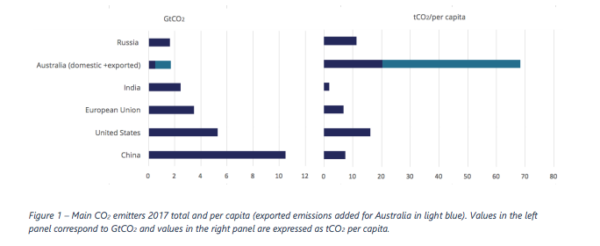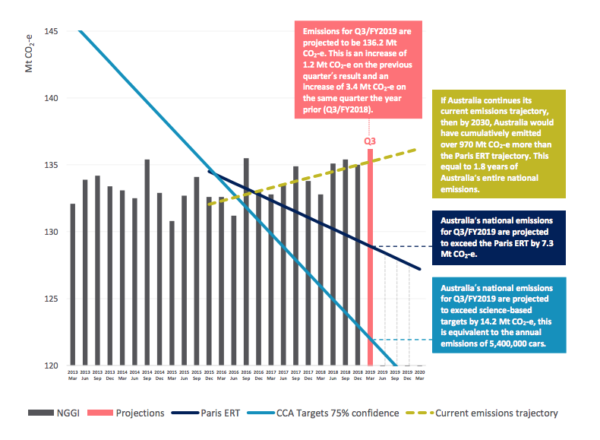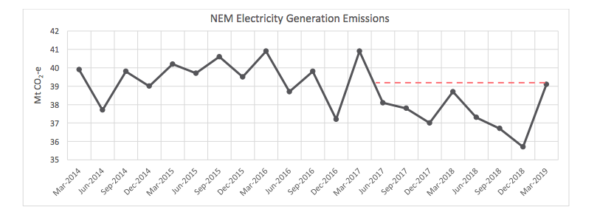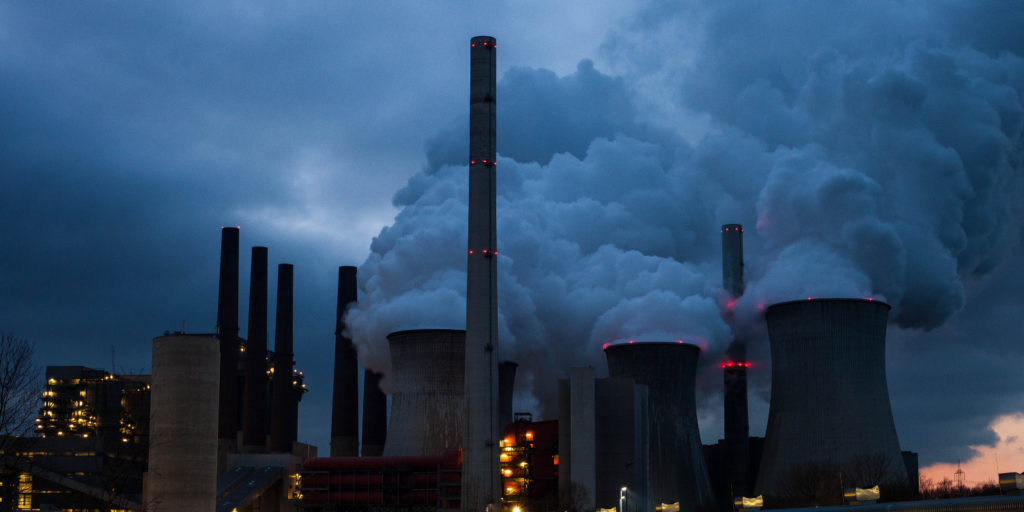Flying in the face of the Federal Government’s claims the Paris commitments will be met “in a canter“, new reports released this week lay bare Australia’s rising global carbon footprint amid fossil fuel expansions. A research by Berlin-based science and policy institute Climate Analytics finds, Australia’s contribution to the global climate pollution footprint is already about 5%.
While Australia’s domestic emissions account for about 1.4% of global emissions, the report found more than twice that, another 3.6%, are a result of coal, oil and gas exports. This carbon footprint is equivalent to the total emissions of Russia, which is ranked the fifth biggest CO2 emitter globally, and behind only India, the European Union, the USA and China.
The results of this analysis showed that if current government and industry projections for fossil fuel exports are realized, such as Adani’s Carmichael mine, other coal projects in the Galilee Basin and LNG projects in Western Australia, Australia could be responsible (including both domestic and exported emissions) for about 13% (between 11.9% – 17.4%) of Paris Agreement compatible global CO2 emissions in 2030. Australian coal is set to account for the lion’s share with around 12% of the global emissions by then.
The Australian Conservation Foundation, which commissioned the research, said this confirms Australia is on track to become one of the world’s worst contributors to climate damage. “Burning coal and gas is the number one cause of the climate crisis and Australia is now the number one exporter of both, with quantities projected to increase dramatically in coming years,” said the Australian Conservation Foundation’s Climate Change & Clean Energy program manager, Gavan McFadzean.
The hotspot of Australia’s coal mining, the Galilee Basin, could on its own account for up to 5.45% of global climate pollution in 2030, if Adani’s mine and all the other coal mines proposed for the region reach full production by 2030. With Australia already the world’s biggest exporter of coal and on track to become the world’s No.1 LNG exporter, liquified natural gas is also emerging as a large and growing pollution problem. “Based on government and industry projections, Australia’s domestic and exported gas emissions could account for up to 3.4 per cent of global climate pollution by 2030,” McFadzean said.
While the greenhouse accounting rules do no reflect pollution in exports, the report shows Australia’s planned fossil fuel expansions are set to undermine global efforts to address climate crisis. “Instead of encouraging new fossil fuel projects, a responsible Federal Government would recognise that most of Australia’s fossil fuel reserves must stay in the ground and would facilitate the necessary rapid transition to clean, renewable energy, while working actively to support communities that will be affected by this transition,” McFadzean said.
While Australia’s emissions have been on the rise, the federal government’s greenhouse gas reports state the last year’s emissions per capita, and the emissions intensity of the economy, were at their lowest levels in 29 years. According to Climate Analytics, Australia is one of the world’s highest per capita CO2 emitters. When exports are factored in, Australia’s carbon footprint on a per capita basis skyrockets from about 20 tonnes to nearly 70 tonnes a year, leaving China behind by a factor of 9, the US by a factor of 4 and India by a factor of 37.

Still rising
Adding fuel to to the fire, the latest emissions estimate from consultancy Ndevr Environmental show Australia’s emissions jumped by 3.4 million tonnes CO2-e in the first quarter of 2019 compared to the same period a year prior. After three consecutive quarters of decline, emissions from electricity generation increased 8.2%, the report finds.
According to Ndevr Environmetal, which publishes emissions tracking reports on a quarterly base ahead of the federal government, such data show Australia is not on track to meet its climate goal of reducing emissions by 26-28% on 2005 levels by 2030. The consultancy estimates that if emissions continue its current trajectory by 2030, Australia will exceed its Paris targets by over 970 million tonnes. This equals 1.8 years of Australia’s entire national emissions.

While reduction in emissions from the electricity sector was one of few bright spots in the nation’s emissions figures, the first three months of the year reversed this trend, after three consecutive quarters of decline. However, rising emissions from electricity generation in the warmer months between the December and March is not unusual due to higher energy use, Ndevr Environmetal notes. “Electricity generation from fossil fuel sources such as coal and gas increased by 3.5 TWh on the previous quarter while electricity generation from large scale renewable energy sources such as wind and hydro fell by 0.75 TWh,” the report states.

Another worrying aspect are fugitive emissions from Australia’s LNG industry, which reached record high in the respective period. On the back of the 22% increase in LNG exports between 2017 and 2018, Australia’s fugitive and stationary emissions are expected to increase through to 2021 in line with the increase in LNG production for the export market, the consultancy finds.
Last week, similar concerns about emissions arising directly from the coal and gas industries in Australia were voiced by The Australia Institute. What TAI found is that, on the basis of the government’s own official figures, emissions from fossil fuel mining made up about 15% of all national emissions in 2017, and were likely to stay on the upward trajectory.
This content is protected by copyright and may not be reused. If you want to cooperate with us and would like to reuse some of our content, please contact: editors@pv-magazine.com.









By submitting this form you agree to pv magazine using your data for the purposes of publishing your comment.
Your personal data will only be disclosed or otherwise transmitted to third parties for the purposes of spam filtering or if this is necessary for technical maintenance of the website. Any other transfer to third parties will not take place unless this is justified on the basis of applicable data protection regulations or if pv magazine is legally obliged to do so.
You may revoke this consent at any time with effect for the future, in which case your personal data will be deleted immediately. Otherwise, your data will be deleted if pv magazine has processed your request or the purpose of data storage is fulfilled.
Further information on data privacy can be found in our Data Protection Policy.